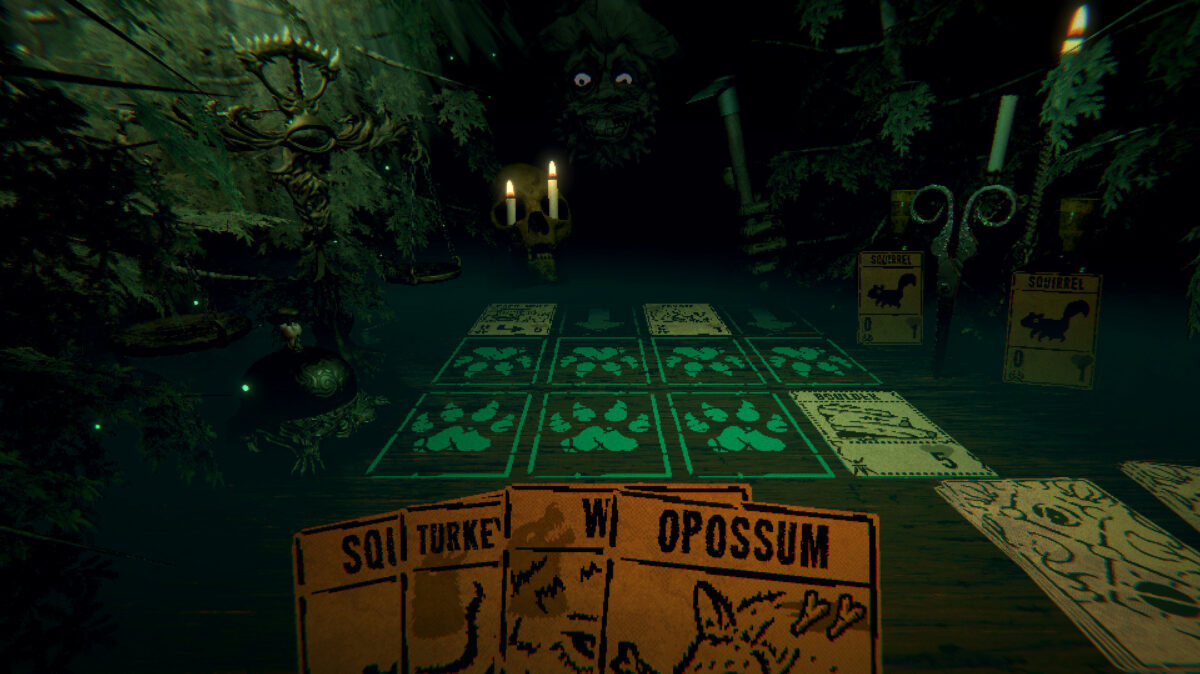Third-Party is a series of guest blogs where developers talk about specific games, mechanics, levels, and more. This week we have Mateusz Tomaskiewicz, principal game designer at Riot Games, speaking about Inscryption’s relentless self-reinvention and meta-narrative.
Mateusz Tomaszkiewicz is a principal game designer specializing in video game quests and narrative content for Riot Games’ upcoming MMO game. His expertise includes designing, creative writing and building narratives within video game engines, game making tools design, and improving internal pipelines and production processes.
[mm-video type=video id=01fz0syj4vkhrbg9wcsw playlist_id=none player_id=none image=https://images2.minutemediacdn.com/image/upload/video/thumbnail/mmplus/01fz0syj4vkhrbg9wcsw/01fz0syj4vkhrbg9wcsw-ade06760fcf2eeb3223e04f10ef915e0.jpg]
Prior to joining Riot Games, Mateusz worked for over twelve years in CD Projekt RED on a number of critically acclaimed projects, including The Witcher 2: Assassins of Kings, The Witcher 3: Wild Hunt, Gwent, Thronebreaker, and most recently Cyberpunk 2077. During his time in CDPR Mateusz has designed a number of quests and stories, he helped build the Quest Design Team and led it throughout a number of projects. He was one of the major contributors to the CDPR games’ direction and vision, mostly in the fields of narrative and quests, with exception of the Thronebreaker project which he has led as a game director.
Mateusz is a passionate video game, tabletop, and board game player – he cares deeply about the player’s experience and immersion and always tries to make games he would love to play himself. As a member of the LGBTQIA+ community, Mateusz understands the need for diversity, inclusion, and representation in the medium.
His favorite video games include Might & Magic VII, Baldur’s Gate II, Gothic series, and Total War series. He grew up and studied in Warsaw, capital of Poland. He prides himself on having a tongue twister name and completing a number of Dark Souls games without rage quitting.

I recently finished playing Inscryption and I have many thoughts on it – I sank into it really fast after recommendations from my friends, which led to a full weekend of binge-playing. It started off as a card game with interesting tug-of-war mechanics and very cool, dark theming. It reminded me a bit of Hand of Fate with its presentation – how the cards are played on a virtual table and how the dealer is in front of you, playing the part of the narrator. I enjoyed the narrative and how it allowed me to play around with mechanics and construct OP decks – I actually managed to quickly build a card that was so strong that it was almost too easy to go through the bosses.
That was all good and well, but what actually made it stand out to me was the meta-level of the game – read on only if you don’t mind heavy spoilers!
The game lets you know right off the bat that you can actually get up from the card table and interact with the environment around the hut. It quickly becomes apparent that these interactions, not the cards themselves, are actually the way to beat the game. Once you discover it, the game starts changing things around and introducing new elements at lighting speed.

As a developer knowing how much time and effort it requires to make features, I was honestly shocked by the number of changes when they first happened – I don’t think I played another game that would toss most of its established mechanics, aesthetics, and themes out the window mid playthrough, turning it into another type of game just like that. And Inscryption doesn’t do it briefly once or twice, it does it four times if you include shorter sequences. Most games strive to establish the rules early on and stick by them, making sure that the player feels comfortable with its mechanics. Inscryption seems to have a different goal – it wants you to be surprised often and to rediscover your way around it each time it does a major shift.
At the same time, Inscryption does a great job of building a mystery. It tactically uses elements that seem just “a bit off” in their design – even as you first boot it up it forces you to press “continue” instead of “new game” button, which initially seems like a minor glitch but is actually a conscious design choice that gets explained much later. And so it consistently continues down that road by messing with the player’s expectations and even introducing “real-life footage” of a player who discovered the game in its meta-narrative, which even feeds into a tie-in ARG mystery.

Aside from execution itself, I think what made it possible to be this special were the initial thought process and design goals – it wasn’t trying to emulate the success of other big card games, nor “revolutionize the genre” in a way that would be replicated by others. It was simply meant to be a unique, intriguing, thought-provoking experience. And I think it did that exceptionally well.
Written by Mateusz Tomaszkiewicz on behalf of GLHF.
[listicle id=1862148]
